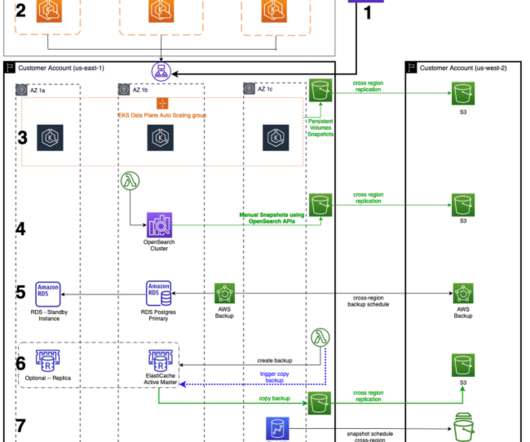Journey to Adopt Cloud-Native Architecture Series: #3 – Improved Resilience and Standardized Observability
AWS Disaster Recovery
APRIL 27, 2021
In this blog, we talk about architecture patterns to improve system resiliency, why observability matters, and how to build a holistic observability solution. The complexity of monolith applications can present unknown failures. Minimum business continuity for failover. Increase resiliency. Predictive scaling for EC2.











Let's personalize your content